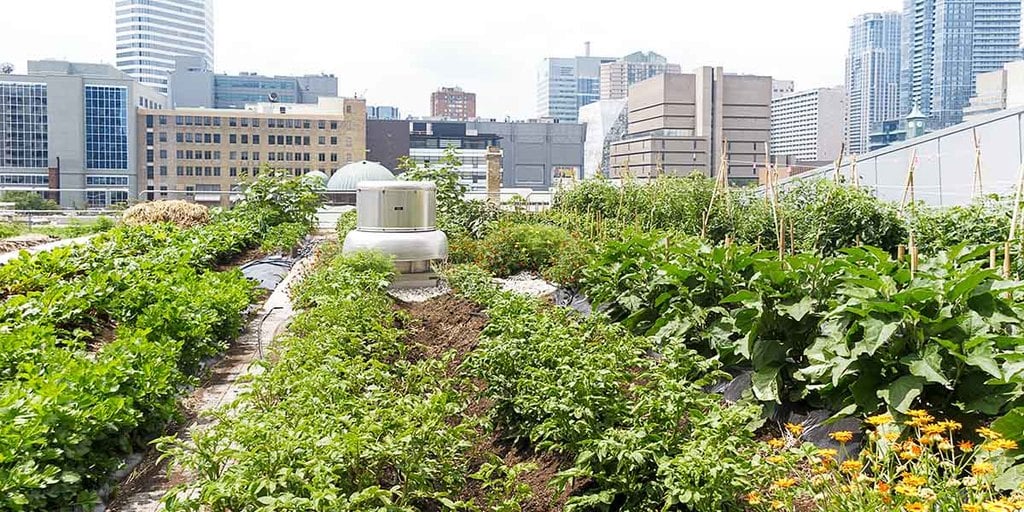Not known Factual Statements About City Blooming
Not known Factual Statements About City Blooming
Blog Article
The 9-Minute Rule for City Blooming
Table of ContentsThe Greatest Guide To City BloomingThe 9-Minute Rule for City BloomingThe 9-Minute Rule for City BloomingCity Blooming - The FactsSome Known Questions About City Blooming.
Fascinated in growing food available for sale in the City of Chicago? Considering starting a community yard? Adjustments to the Chicago Zoning Regulation allow agricultural usages like neighborhood yards and metropolitan ranches in numerous parts of the city. Below is a list of frequently asked questions concerning the guidelines and regulations that farmers should think about when planning a city agriculture job.
The zoning amendment does not modify any type of other codes taking care of composting, building licenses, acquiring or renting City had building, organization licenses or environmental contamination. There are existing codes that manage these issues and they stay in complete impact and may be relevant to your job. Area yards are typically possessed or taken care of by public entities, public organizations or community-based companies and maintained by volunteers.
Urban ranches grow food that is meant to be marketed, either on a not-for-profit or for-profit basis. Due to their commercial purpose, metropolitan ranches call for an organization license.
City Blooming for Beginners
The quantity of compost product can not surpass 25 cubic yards at any kind of given time according to the criteria in 7-28-715 of the City's Municipal Code. Since the dirt at many brand-new garden sites requires amending, garden compost, soil, timber chips, or other products can be acquired to build or improve the expanding area.

If a structure permit is called for then the hoophouse will be taken into consideration an accessory structure. You can figure out more regarding the building authorization requirements by contacting the Division of Buildings. The 25,000-square-foot size limitation is intended to avoid a solitary community yard from controling a given block or interfering with the block's existing domestic or commercial character.
The limitation does not put on gardens located in Public Open Room (POS) areas. Can there be greater than one community garden that is 25,000 square feet on a solitary block? Yes. The size restriction applies to specific gardens, not to specific blocks. No. Fencing is not called for, however, yards that have huge parking lot may be called for to set up secure fencing or other landscape design functions.
The Best Strategy To Use For City Blooming
B1 & B2 areas call for that all industrial use redirected here tasks be conducted inside. R districts limit industrial activity. The policies show the objective and intent of the Zoning Code. Is fencing needed for urban ranches? Yes. Fences might be required, together with landscape design and screening, for sure vehicle parking locations and outside job or storage locations depending upon place and the particular activity happening.
Urban farms call for structure licenses and zoning authorizations prior to building and construction (home and garden). Various other kinds of city review may be needed depending on specific frameworks, activities, size, landscape design, licensing, public heath and stormwater management problems.
Yes. The type of certificate is established by what is occurring at the website. The Department of Service Affairs and Customer Protection can assist figure out the certain type of service license that's called for. Yes. Off street car parking is needed for most business projects in Chicago. The needed variety of auto parking spaces is based upon the number of employees functioning on site and not the square video footage of the expanding area.
Not known Incorrect Statements About City Blooming

Yes. A city farm can offer garden compost product produced on site, nonetheless, the procedure needs to abide by the guidelines in 7-28-715 of the Chicago Municipal Code. Yes. Aquaponic systems are enabled inside on city ranches in lots of zoning areas. A zoning review and structure authorization is called for in order to mount frameworks or systems and a business certificate is called for as explained above.
As much as five hives or colonies of honey might be kept as an accessory usage. Beekeepers should sign up with the Illinois Department of Agriculture. To find out more about the recommended zoning amendment you might speak to the Division of Housing and Economic Development, Bureau of Preparation and Zoning at 312.744.8563.
, which takes area in country areas at the edge of residential areas.
4 Easy Facts About City Blooming Shown
, that seek to create social networks founded on a common values of nature and area holism. These networks can develop by method of official institutional support, coming to be incorporated into regional community preparation as a "shift community" activity for sustainable city development.
Some of the initial proof of city agriculture comes from Mesopotamia.
Report this page